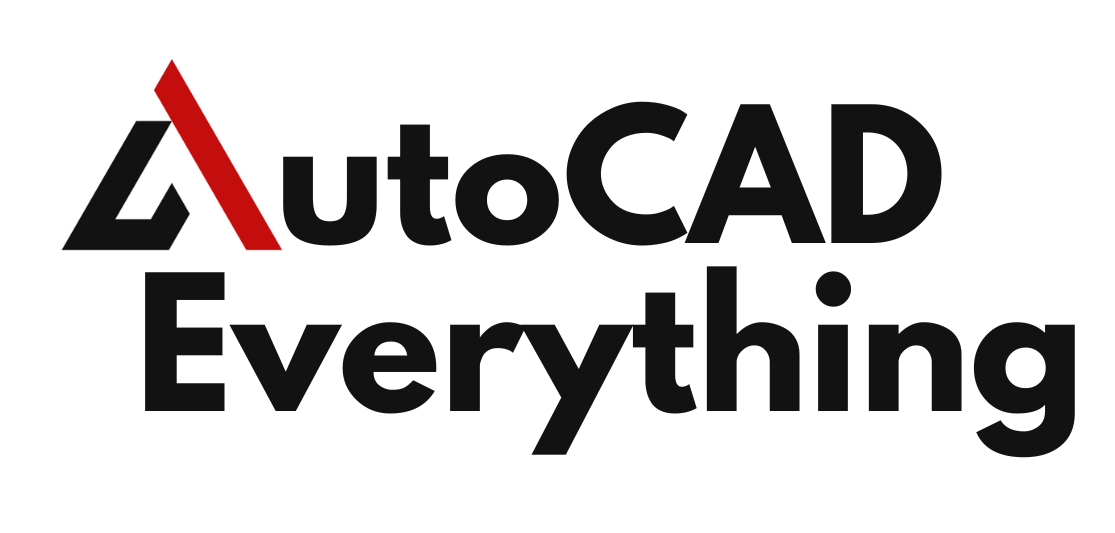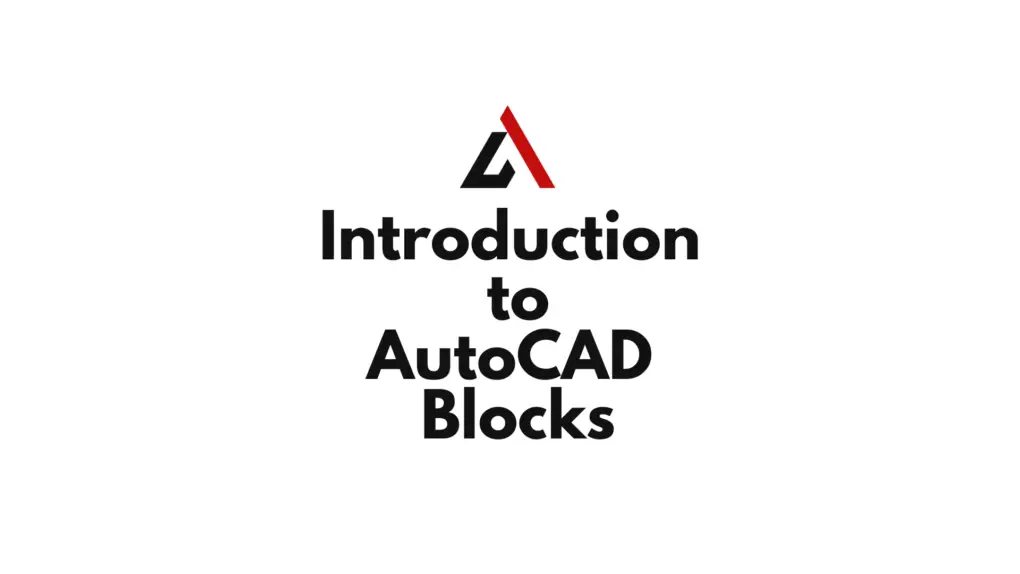Introduction
In AutoCAD, blocks are one of the most powerful tools for increasing drawing efficiency, consistency, and accuracy. By using blocks, you can create reusable symbols or components that can be inserted into your drawing multiple times without needing to redraw them. This is especially useful for elements like furniture, doors, windows, and electrical components, which appear frequently in architectural, mechanical, or engineering designs. Understanding how to create and use blocks in AutoCAD can save you time, improve organization, and ensure a higher level of standardization across your projects.
This article provides a comprehensive introduction to AutoCAD blocks, explaining their uses, benefits, and how they can be implemented to streamline your workflow.
Table of Contents
What is a Block in AutoCAD?
In AutoCAD, a block is essentially a collection of objects (such as lines, circles, and text) that are combined into a single entity. Once defined as a block, this group of objects can be reused throughout your drawing or across different projects. Blocks can represent a wide variety of objects, such as:
- Architectural Symbols: Doors, windows, fixtures, or furniture.
- Mechanical Components: Gears, fasteners, or bearings.
- Electrical Symbols: Outlets, switches, or wiring diagrams.
- Company Logos: Used for title blocks or project documentation.
Blocks can either be static (fixed in size and shape) or dynamic (with adjustable parameters such as size, orientation, and configuration).
Why Use Blocks in AutoCAD?
Blocks offer several advantages that enhance productivity and ensure consistency in your designs. Here are some key reasons to use blocks in AutoCAD:
1. Improved Efficiency and Speed
Blocks allow you to insert pre-drawn elements into your drawing, reducing the need to redraw objects repeatedly. Once a block is created, it can be inserted as many times as needed, saving time and effort.
- Example: If you’re working on a floor plan, you can create a block for a door. Instead of redrawing the door for every instance, you simply insert the block into the appropriate places.
2. Consistency Across Drawings
Blocks ensure that standardized objects are represented uniformly throughout your project. This reduces the risk of errors and inconsistencies, especially when working with large teams or complex designs.
- Example: Using the same furniture block in multiple rooms ensures that all instances are identical, maintaining a consistent appearance.
3. Reduced File Size
By using blocks, AutoCAD stores only one copy of the block definition, regardless of how many times it is inserted into the drawing. This reduces the overall file size, making your drawings more manageable and easier to share.
- Example: A block for a window might appear hundreds of times in a large building plan, but AutoCAD only stores the data for the block once, reducing the file size compared to if each window were drawn individually.
4. Simplified Edits
When a block needs to be updated or modified, you can make changes to the block definition, and all instances of that block will be automatically updated. This centralized editing process ensures that you don’t have to manually adjust each occurrence.
- Example: If you need to change the dimensions of a door block in a building plan, you can update the block once, and every door in the drawing will be updated automatically.
5. Enhanced Organization
Blocks help organize your drawings by grouping related objects together. This reduces clutter in complex drawings and makes it easier to manage and modify individual components.
- Example: Electrical schematics often contain many symbols and connections. By grouping these into blocks, you can easily manage the symbols and connections as a single unit.
Types of AutoCAD Blocks
There are several types of blocks in AutoCAD, each serving different purposes depending on your project needs:
1. Standard Blocks
A standard block is a basic collection of objects that are combined and saved as a single entity. Once created, a block can be inserted into any drawing without having to redraw the individual components.
- Example: A furniture block for a chair can be reused across different office layouts.
2. Dynamic Blocks
Dynamic blocks allow you to create blocks with adjustable features. These blocks can have parameters that allow for rotation, scaling, stretching, or flipping, depending on how they are configured.
- Example: A door block that can be stretched to different widths or flipped to show the door swinging in different directions. This flexibility eliminates the need for creating multiple blocks for each variation.
3. Annotative Blocks
Annotative blocks are designed to automatically scale based on the viewport scale of the drawing. This ensures that the block’s size remains appropriate and legible at different scales, making it particularly useful for symbols or text-based blocks.
- Example: Electrical symbols or text annotations that need to remain clear and readable regardless of the drawing scale.
4. External Blocks (Xrefs)
External references (Xrefs) are blocks that link to an external drawing file. Changes made to the external file are automatically reflected in the host drawing, making Xrefs ideal for collaborative projects.
- Example: A site plan that links to a separate building drawing file. Any updates to the building drawing will automatically update the site plan.
How to Create a Block in AutoCAD
Creating a block in AutoCAD is a straightforward process. Here’s a step-by-step guide to creating and using blocks:
Step 1: Create the Objects for the Block
Start by drawing the objects that will make up your block. For example, if you’re creating a block for a desk, draw the desk’s outline, dimensions, and any other details required.
- Tip: Make sure the objects are properly organized on the correct layers, with appropriate line types and colors.
Step 2: Define the Block
Once the objects are ready, you can define them as a block.
- Type
BLOCKin the Command Line and press Enter. This will open the Block Definition dialog box. - Name the Block: In the Block Definition window, enter a unique name for the block (e.g., “Desk_Block”).
- Specify a Base Point: The base point is the insertion point for the block. Choose a logical base point, such as the corner or center of the object, by selecting it in the drawing or entering coordinates.
- Select Objects: Use the selection tool to choose all the objects you want to include in the block.
- Click OK to create the block.
Step 3: Insert the Block
Once the block is defined, you can insert it into your drawing as many times as needed.
- Type
INSERTin the Command Line and press Enter. - Choose the Block: In the Insert dialog box, select your block from the list of available blocks.
- Specify Insertion Point, Scale, and Rotation: Choose the appropriate settings for each insertion, such as placement, size, and angle.
- Click OK to place the block in your drawing.
Step 4: Edit the Block (if needed)
If you need to modify the block, you can use the Block Editor to make changes.
- Type
BEDITin the Command Line and press Enter. - Select the Block: Choose the block you want to edit from the list.
- Modify the Block: Make any necessary changes to the block’s geometry, attributes, or parameters.
- Save and Exit: Once the edits are complete, save the block and exit the Block Editor. All instances of the block in the drawing will be updated automatically.
Best Practices for Using Blocks in AutoCAD
To make the most of AutoCAD blocks and maximize efficiency, consider the following best practices:
- Use Layers Effectively: Assign objects in your block to the appropriate layers so that their visibility and properties can be controlled independently within the drawing.
- Name Blocks Clearly: Use descriptive names for blocks that reflect their purpose (e.g., “Door_TypeA” or “Electrical_Outlet”). This makes it easier to find and reuse blocks in future projects.
- Group Similar Items: If you have a collection of similar items, such as multiple types of doors or furniture, create blocks for each type. This ensures uniformity and makes modifications easier.
- Use Dynamic Blocks for Flexibility: Create dynamic blocks with adjustable parameters to cover a range of variations. For instance, a window block that can be resized instead of creating multiple blocks for different window sizes.
- Organize a Block Library: Keep a well-organized library of commonly used blocks that can be accessed for future projects. This saves time and ensures that standardized components are used across all drawings.
Conclusion
AutoCAD blocks are an essential tool for enhancing drawing efficiency, consistency, and accuracy. By creating reusable components and inserting them into your drawings, you can reduce repetitive tasks, maintain uniformity, and streamline your workflow. Whether you’re working on architectural plans, mechanical designs, or electrical schematics, blocks can help you manage complex drawings with ease. By mastering the creation and use of blocks, you’ll significantly improve your productivity in AutoCAD, ensuring that your projects are completed faster and with greater precision.
FAQs
- What is a block in AutoCAD?
A block in AutoCAD is a collection of objects that are combined into a single entity, allowing for reuse and efficient insertion into drawings. - How do I create a block in AutoCAD?
To create a block, draw the objects, typeBLOCKin the Command Line, define the base point, select the objects, and give the block a name. - What are the benefits of using blocks in AutoCAD?
Blocks improve drawing efficiency by saving time, ensuring consistency, reducing file size, simplifying edits, and organizing your drawing elements. - What is the difference between a standard block and a dynamic block?
A standard block is static, while a dynamic block has adjustable parameters, such as the ability to stretch, rotate, or change size. - Can blocks be updated across multiple instances in a drawing?
Yes, if you edit the block definition, all instances of that block in the drawing will automatically update to reflect the changes.

